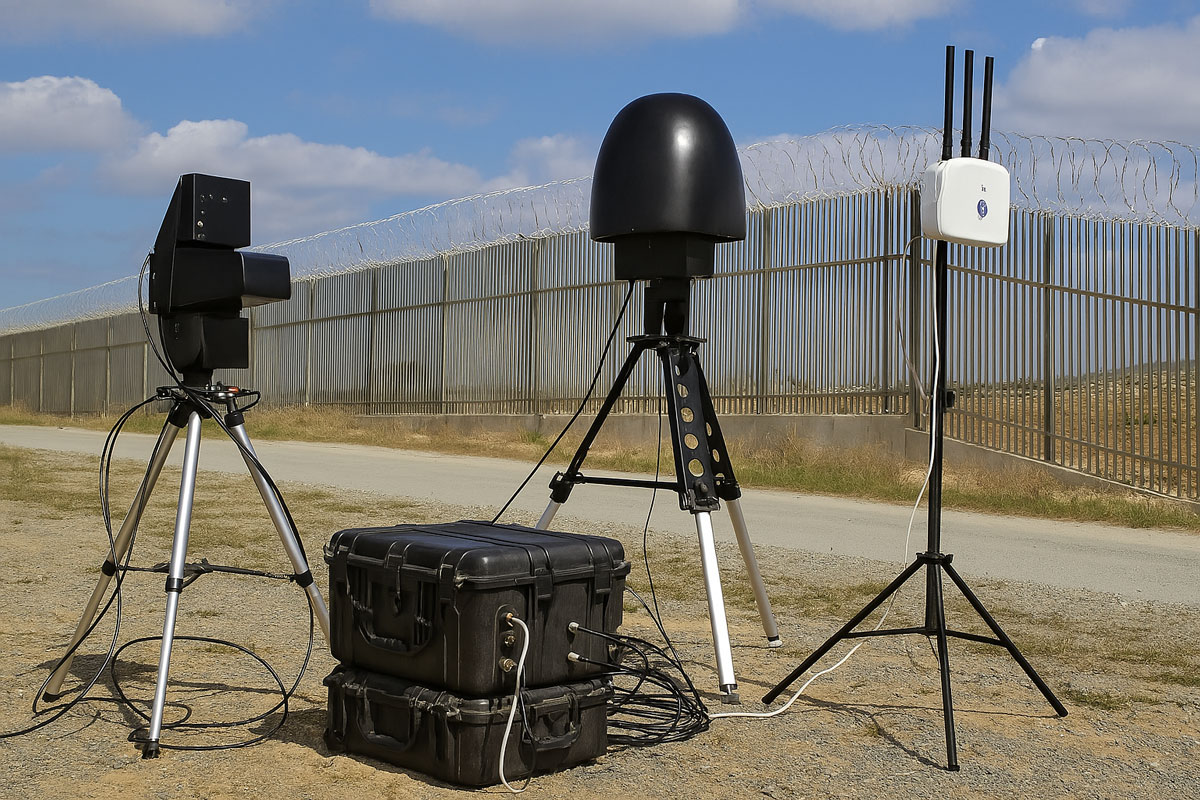With so many devices using a limited frequency, RF jamming is not just a nuisance, it can be life-threatening
It’s been over 100 years since the radio waves were first used for communication and it seems that few inventions have enjoyed such widespread adoption. There are radio-enabled communication devices for personal and public use, for broadcasting audio or video, for medicinal purposes, for measurement, for security. The simplicity and predictability of radio frequency is also its Achilles heel. Like the subway, as the airwaves become crowded, the more likely it is that someone will invade your space.
Non-contact RF interference (as opposed to interference that can be caused by physical contact with an electricity conductor) generally occurs when there is more than one signal on the same frequency in the same location, so they interrupt each other. There are different types of jamming. In some cases it is unintentional and can be a result of a malfunctioning piece of equipment, or even faulty wiring, which generates an electromagnetic interference (EMI) that can cause ‘bursts’ in a different frequency. While the causes can be all around us, the impact of these unintentional disruptions is limited since, once detected, they are usually straightforward to fix and tend to impact older systems that lack the selectivity to filter out ‘noise’.
On the other hand, intentional interference, generally referred to as RF jamming, is a much larger concern. There are commercial, off-the-shelf RF jammers as well as purpose-built devices that are designed to target specific systems. These jammers can range in size and capacity from stealthy, hand-held, battery operated devices to cabinet-sized, heat-generating, high-voltage units. The difference is in which signals the jammer is trying to disrupt, at what range and how clandestine is the jamming.
Why would I need an RF jammer in the first place?
A while back, I came across a Reddit thread about interference and RF jamming and was struck by the conspiratorial tone of the whole discussion. A group of enthusiasts all chimed in to shush the originator of the thread, because the fact of the matter is that the use of RF jammers is in fact a Federal Offense in the US, with a penalty of up to $16,000 for each violation or each day of a continuing violation. A classic case of government over-reaction? Not entirely.
The reason is that today, especially with wireless internet connectivity, there are many systems that rely on radio frequencies; alarm systems, surveillance cameras, location-based services. There are numerous consumer products that will help a person ‘hide’ by jamming the signals that could be used to monitor them. Cell jammers may be used in places that frown upon using cellphones. GPS jammers can be used to prevent or mislead tracking systems. Such jammers are often used by law enforcement and security personnel. By the same measure, those who oppose law-enforcement or wish to breach security systems, use RF jamming as well.
The threat isn’t limited to the intended purpose of the jamming; since most RF jamming is indiscriminate there can be collateral impact on communications all around. Emergency calls, air-traffic control, police-radios may all suffer from the interference caused by even a simple jammer.
Wireless security invites wireless threats
Your system can be breached by a store-bought jamming device
Most wireless security systems heavily rely on wireless communication, for receiving signals from the many sensors and for communicating an alert when a suspected breach is detected. The advantage is that you can place a virtually unlimited amount of sensors, wherever you need them and with minimal installation effort (and no unsightly cables). However, this does leave the system vulnerable to communication jammers, which can blind the system, at least temporarily, in order to get by without triggering an alarm.
Jamming devices generally function by creating ‘noise’, drowning out or confusing the devices that share the same frequency in their vicinity and disrupting their signals. Larger devices are capable of sending out stronger signals over a larger range; larger antennas are capable of operating across a broader range of frequencies.
3 tips for defeating jamming devices
To protect a wireless security system from the threat of such communication jammers:
- Avoid relying on a single communication channel- diversifying the channels broadens the range of the system and makes it more difficult to drown out all of them simultaneously. It is especially important to separate the communication between the edge sensors and the control unit from the external communication between the control unit and the security personnel. Any breakdown in communication on one channel can also trigger an alert, via a second channel, for possible interference and increase the threat level of the system. While it is possible to completely drown out wireless communication across all frequencies, that would require a very powerful, hard-to-conceal device and skilled engineering.
- Disguise the location of your units- Portable jamming devices can be unobtrusive, allowing the user to approach without raising suspicion. However, their range is limited, especially when you factor in the need to go through walls and other obstructions, so they need to be accurately pointed towards the target. Edge security units that are clearly marked, or very visible, make that job easier, and the result is that the control unit will not receive the alert of a breach. Control units that are not adequately camouflaged make it easy for the communication jammer to blanket all outgoing signals that would communicate an alarm to security personnel or law enforcement.
- Design the system to monitor threats- Prolonged RF interference can be a precursor to a breach attempt and the system should be on alert. By monitoring for interference on all the communication channels, the system can react to the interference itself instead of waiting to receive a specific signal which could be disrupted. By raising the threat level of the system to possible activity by a communication jammer, security personnel can be alerted to investigate the threat before the jamming device is able to completely disrupt communication.








